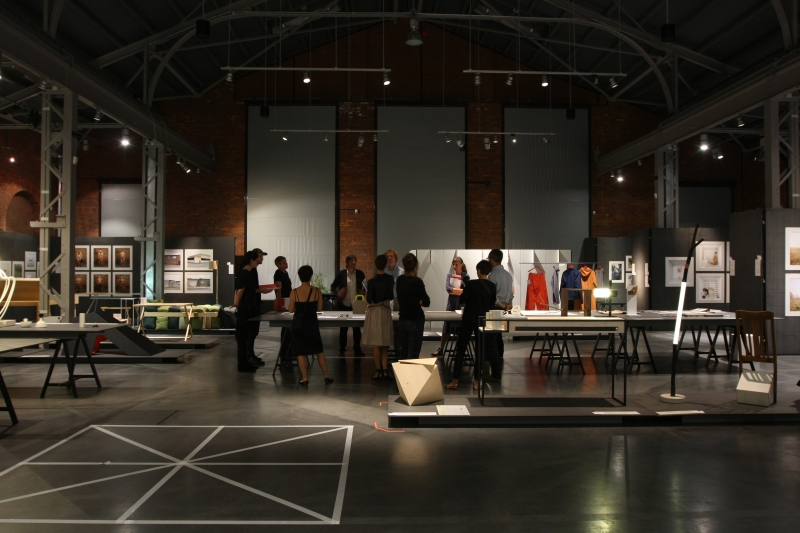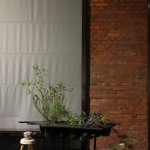International Marianne Brandt Contest 2013: Exhibition
We’re not going to pretend everyone is enamoured with our constant pops at Chemnitz. Truth is for the majority our behaviour lies somewhere between adolescent immaturity and the senseless ravings of an embittered pensioner. And indeed all did in fact begin when we were immature teenagers. And we’ve long since reach the enviable status of rancorous elder citizens.
But despite being unenamoured with our demur, most have accepted and understood that it is nothing personal, that it is just an historical wound we carry.
And so as on Saturday we bid our farewells to one of the International Marianne Brandt Contest organisers they looked us in the eye and with a knowing look said “Till we meet again. In Chemnitz”
To which we replied the easy and painfully obvious “That’ll be in three years then!”
And then regretted it.
Not because it was the lamest of lame answers, but because on a day such as Saturday September 7th 2013 with the sun shining, the facades of the city’s new museums gleaming invitingly and Karl Marx looking for all the world like a considerate old uncle with a bag full of candy to share with us all, we realised it really is time to move on. To give Chemnitz a new chance.
Part of the credit for turning our minds lies, unquestionably, with the International Marianne Brandt Contest.
And until October 1st 2013 all nominations for the International Marianne Brandt Contest 2013 can be viewed in an exhibition in the Industrial Museum Chemnitz.
The International Marianne Brandt Contest Exhibition is a relatively simple affair, a curatorial decision that leaves the visitor time and space to truly consider the objects. And consider you must.
The theme of the International Marianne Brandt Contest is “The Poetry of the Functional”, a slogan which as first of all poses the question, can functionality have a poetry? Does the function not rule out the poetic?
The answer of course depends on your definition of poetry.
Claudia Biehne and Stefan Passig’s delicate porcelain collection “Lumos”, for example, is finest elegy in the tradition of Percy Bysshe Shelley or Thomas Gray.
Alexander Penkin’s “Thinking outside the bag” understands the finer points of satirical poetry, and for all that satire isn’t senseless, while Veronika Wildgruber’s “Janus” Table is pure narrative.
And the keen amateur literary scholar will find a wealth of inescapable references in the International Marianne Brandt Contest exhibition.
Among the product design highlights for us was “2tables” by Anna Albertine Baronius. A desk with an inbuilt light, 2tables is just the most ludicrously obvious yet previously unattained delight packaged in a beautifully crafted piece of work. We have heard complaints that although the two forms of 2tables are “open” and “closed”, you can’t use it in the closed form for laying things down on as that means that to use the open form you have to move the objects atop. For us however that is part of the beauty. It forces you to be a little tidier, to consider a little more how you use your space. And all objects that do that will always appeal to us.
The herb rack “Kitchen Herbs 2.0” by Tina Schönheit, tickled us as a nice, if somewhat too overly playful, idea and we were also very taken with the modular folded sheet steel “Modular Parking Garage” by Thomas Wagner. In addition it was lovely to catch up again with old acquaintances such as Sample Avenue by Karoline Fesser or the desk and chair combination Sam and Suzie by Gesine Hillmann and Jan Regett, objects which genuinely shone in the rarefied atmosphere of the Industry Museum Chemnitz.
As we all know we had our problems fully understanding the rules for the Cradle-to-Cradle category. But the contest exhibition makes everything relatively clear. Relatively because the “Cradle-to-Cradle” aspect isn’t always ssssooo obvious. In addition to objects we were already familiar with including the ever delightful Max Trill stool by Katharina Schwarz, an object we last saw in the sadly missed Galerie dieschönestadt in Halle, highlights of the Cradle-to-Cradle category for us were “AntikKOMBO” by Björn Kendelbacher and Stephan Eggers and BugBox from Franziska Callensee, Vera Aldejohann and Adrian Meseck.
If the 2013 contest/exhibition has a weakness for us it is/was without question the photography. We spend a lot of time looking at photos and are really bored of looking at photographs that are perhaps technically perfect. But equally perfectly dull. Or worse: clichéd, obvious, tired, why did you even bother? We recently lamented the ubiquitousness of “…black and white photos of old wrinkly faced cigar smoking Cubans.” And for us too many of the works on show in Chemnitz are metaphorical smokin’ crinkly faced residents of old Havana.
There were of course exceptions, exceptions that perfectly proved what photography can be. “Eldorado” from Jan Mammy is/was just delightful, and not just because of the more than obvious nods to Bauhaus photography. Further photography projects worthy of a notable mention include “Aprés une Architecture” by Margret Hoppe and the perversely addictive documentary shots compiled by Kirill Golovchenko into his “Kachalka” project.
If were honest we weren’t, on the whole, ssssooo taken with the 2013 nominations as those from the 2010 contest. For us there was, for example, nothing to match objects such as Damensattel or Mechthild. But that is not to diss the 2013 nominations. The quality is without question very high and certainly better than you’re going to find in most design competitions.
Quite aside from the fact that the through the International Marianne Brandt Contest the memory and legacy of one of the more interesting modernist era designers/artists is kept very much alive, there are a lot of reasons to admire the Marianne Brandt Contest: the very reasonable entry fee, the lack of compulsion to pay “licensing fees” should you win, the genuinely useful non-cash prizes offered by some sponsors or the wonderful theme being the most obvious.
And that is probably why so many genuinely talented, innovative and thoughtful young designers take part.
And they are also all excellent reasons to recommend a visit to the Marianne Brandt Contest Exhibition.
And so by extension, the trip to Chemnitz.
The International Marianne Brandt Contest 2013 Exhibition can be viewed at the Industry Museum Chemnitz until Tuesday October 1st 2013. Full details can be found at http://marianne-brandt-wettbewerb.de
For all who can’t make it, a few impressions. A larger gallery can be found on our pinterest board.
As before, in the interests of openness and transparency, (smow) Chemnitz are a sponsor of the International Marianne Brandt Contest.
- International Marianne Brandt Contest 2013: The Jury in discussion.
- International Marianne Brandt Contest 2013: The Jury still discussing
- International Marianne Brandt Contest 2013: Margret Hoppe, Apres une Architecture
- International Marianne Brandt Contest 2013: The Jury inspect 2tables by Anna Albertine Baronius…..
- ….. and like what they see. 2tables by Anna Albertine Baronius.
- International Marianne Brandt Contest 2013: Kirill Golovchenko, Kachalka
- International Marianne Brandt Contest 2013: Claudia Biehne and Stefan Passig, Lumos
- International Marianne Brandt Contest 2013: Julian Heckel, Dilettante shapes
- International Marianne Brandt Contest 2013: Jan Manney, Eldorado
- International Marianne Brandt Contest 2013: Photography
- International Marianne Brandt Contest 2013: Mirko Hinrichs and Silvio Scheller, Biest
- International Marianne Brandt Contest 2013; C’mon C’mmons, Tischlein deck dich
- International Marianne Brandt Contest 2013: Karoline Fesser, Sample Avenue
- International Marianne Brandt Contest 2013: Veronika Wildgruber, Janus
- International Marianne Brandt Contest 2013: Yi-Cong Lu, holo lamp
Tagged with: chemnitz, International Marianne Brandt Contest
















